Do you want to grow an audience filled with loyal, raving fans who can’t wait for the next post you publish?
The most successful creators aren’t just chasing numbers and revenue.
They’re building trust, earning loyalty, and giving their readers (and followers) plenty of reasons to keep coming back for more content.
In this post, you will learn how you can grow your blog audience and social media following as well as tips on how to maintain that audience.
Let’s get into it.
Strategies for building an audience
If you want a loyal audience, you first need to build that audience.
Growing an audience requires multiple channels for content distribution, quality content that targets audience needs, wants, and pain points, and strategic marketing tactics that earn you email subscribers and followers.
In this section, I focus on specific strategies you can use to grow your audience on your blog and social media platforms alike.
1. Find your audience
Sometimes growing your audience is as simple as rethinking your content distribution strategy.
It’s entirely possible that you’re spending the majority of your time creating content for TikTok when the majority of your audience consumes content on YouTube.
In the same vein, you might be publishing post after post on various topics related to your niche without sticking to a content strategy that targets a specific market, such as beginners.
Here’s how to get started:
First, choose a target market. This will help you to determine which topics your blog and social media content should be targeting and how to approach those topics.
For example, beginners in your niche will need you to break topics down so they’re easier to understand. Advanced users won’t need the same treatment.
Next, you’ll need to figure out which platforms your audience uses the most.
This could include various social media sites such as TikTok and YouTube. But don’t limit yourself to these platforms. Also consider blogs, news sites, print magazines, and more.
Once you know which platforms your target audience is on, you can start strategizing and figure out a way to get your content on those platforms.
But before you do this, you’ll need to combine the next tip, so let’s read on…
Related: How to Choose a Niche for Your Blog [+ 100 Niche Ideas]
2. Offer value wherever your audience is present
Content often falls into one of five content pillars that represent types of content all creators produce:
- Educational
- Promotional
- Entertaining
- Inspirational
- Engaging
Because most marketers want to grow their following and earn revenue, they mostly target content pillars that help them achieve that goal, specifically the promotional pillar.
If you want your audience to keep coming back, you need to provide value to them without asking for something in return.
Here’s the approach I’d recommend:
- Create educational content that doesn’t include affiliate links or products you offer.
- Create entertaining content that’s just that: entertaining.
- Inspire your audience by sharing your own struggles, accomplishments and journey in your niche.
- Engage your audience by responding to their comments, answering their questions and creating content they request.
Don’t forget to incorporate my previous tip here. Always offer this value by targeting topics that interest your target market and publishing valuable social media content on the platforms your audience uses most.
3. Consider focusing on a single platform in the beginning
When you’re just starting out, you might find more success by going deep with your social media strategy instead of wide.
This means focusing on a single platform rather than spreading yourself thin by creating content for every social media platform under the sun.
By focusing on one platform, you’re able to create higher quality content on a more consistent schedule.
Find out which platforms your audience uses most, and focus on creating content for it.
Alternatively, focus on the platform that drives the highest amount of social traffic for you.
Just remember that even if you do decide to focus on that one platform, that doesn’t mean you can’t cross post content to other platforms.
For example, you can easily cross post Instagram reels as short-form videos to TikTok, Facebook Reels and YouTube Shorts.
You don’t even need to do this manually. If you schedule content with a tool like SocialBee or Viraly, you can schedule content for multiple platforms with a single draft.
4. Build a user-friendly website
What do readers see when they visit your website?
Are they bombarded with ads and popups the second they land on your website? Is your sidebar filled with affiliate products you promote and links you think your audience would be interested in?
There’s nothing wrong with earning revenue through ads and using popups on your site (you likely saw at least one popup while browsing this very web page), but these elements shouldn’t take up the majority of the viewport.
Follow these tips to build a more user-friendly website:
- Create a fast website by using better hosting and a high-performing WordPress theme
- Optimize your site for mobile devices by writing shorter paragraphs. Your theme/template are likely responsive, so you shouldn’t need to worry about optimizing the design of your website for mobile on your own
- Optimize blog posts for readers by breaking content up with H2 and H3 headings, including bullet and numbered lists, and adding engaging images
- Remove distractions, such as sidebar widgets that serve no purpose
- You don’t need a navigation menu in your sidebar if you already have them in your header and footer
- You don’t need an opt-in form in your sidebar if you use popups and embedded forms
- An About Me widget is unnecessary if your site uses author boxes and has an About page
- Try to limit the number of sponsor/affiliate images you promote in your sidebar
- Consider removing your sidebar altogether (if it makes sense to)
- Limit the number of ads you use on your site, or find alternative monetization strategies
- Use a lead generation tool like ConvertBox so you can use different triggers for popups, such as timed triggers
- Avoid using sticky headers, especially if you already use a sticky hello bar
5. Start an email list
When visitors land on your website, you need a way to get them to come back.
Sure, they might find links on Google, other sites and social media again, but the most effective way to ensure new visitors see more of your content is by starting an email list and capturing new visitors as subscribers.
That way, you can send newsletters to keep your blog audience and social media following up to date with your latest content from both distribution channels.
There are a lot of email marketing services to choose from, but I mostly recommend MailerLite for new creators.
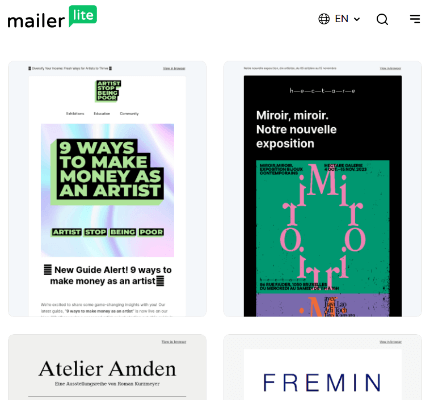

It has a free plan, but its paid plans aren’t very expensive.
It offers a drag-and-drop email builder, automations, opt-in forms, segmentation, paid newsletter subscriptions, and ecommerce-related features.
No matter which email marketing service you ultimately decide to use, be sure to add opt-in forms to blog post pages.
Embedded forms and popup forms work great, but you can also use a sticky opt-in form that stays at the top of your reader’s browser as they scroll.
Related: MailerLite Review: Pros and Cons You Need to Know
Note: Kit is another popular option for creators and they offer a generous number of subs on their free plan but their core email functionality feels somewhat neglected. There are also more feature restrictions compared to MailerLite’s free plan.
6. Limit the number of fields your opt-in forms use
You might be tempted to include several fields in your opt-in forms so you can learn more about the various demographics that make up your audience.
However, the more fields your opt-in forms have, the less likely visitors will be to fill them out.
Opt-in forms don’t require more than an email address field.
Add a Name field if you want to personalize your emails.
7. Create a dedicated page to promote your email list
Give your visitors a way to subscribe to your email list whether they visit your homepage, your Contact page, or a specific blog post page.
By creating a dedicated landing page for your newsletter, you give your visitors a definitive way to subscribe to your list.
Not only that, it gives you a way to pitch your email list.
Check out my landing page for Blogging Wizard’s Newsletter:


This page has the following elements:
- Two opt-in forms: one at the top of the page, and another at the bottom
- Brief explanation of what subscribers will receive in their inboxes
- An image of me for credibility
- A list of noteworthy-sites my advice has been featured on
- Testimonials from readers my content has helped
I highly recommend creating a similar page for your own email list.
If you take a brief look at the header of Blogging Wizard, you’ll find a Newsletter button that leads to this page:


8. Add opt-in forms to key pages on your website
Make sure you also add opt-in forms to the following pages:
- Home
- About
- Blog
- Contact
- Resources
- Business pages (Services, Hire Me, etc.)
- 404 page
These will be among the most-visited pages on your website, so you might as well turn them into conversion opportunities.
9. Create better content
If you’re having trouble growing your audience, you might need to face a hard truth: your content might not be as good as it could be.
Fortunately, there’s always room for improvement.
Try these tips for creating better content:
- Be authentic – Be more personable with your content. Instead of writing (or speaking if you’re creating social media content) things in a way like “this tactic is the best way to solve this problem,” try writing it like “this is the tactic I used to solve [specific problem you actually had].”
- Be engaging – Make your content more engaging by including original images in blog posts, including more personal images in blog posts, using more lists, adding cuts to social media posts, and adding storytelling elements to all content.
- Be concise – Don’t over explain topics in blog posts. Get right to the point, and try to use simpler sentences. Similarly, create shorter videos for social media, and cut out moments where a lot of nothing happens.
It also helps to know what struggles your audience is currently going through and what topics they really care about.
Conduct audience research on a regular basis to discover this information. You can do this by creating a simple survey with Google Forms and promoting it to your audience across social and/or email.
Another option would be to add an email to your automation sequence inviting subscribers to give you feedback. It could be at the bottom of another email or as its own dedicated email.
10. Repurpose blog content on social media
If you already have a few popular blog posts, make things easier on yourself by repurposing them as social media posts.
These topics have already proved themselves as being topics your audience is highly interested in. All you need to do is recreate and optimize them for social media.
Here are a few ways you can do this:
- Break your post down into chunks, then create short-form videos for each of those chunks
- Use Canva’s Bulk Create app to create several short-form videos automatically (requires Canva Pro)
- Condense your post into one short-form video
- Create a carousel. You can use Canva’s Bulk Create app for this as well
- Turn your entire post into a long-form YouTube video
- Condense your post, and transform it into a thread for Twitter (X), Threads, and Bluesky
- Round up a list of facts from your post, and create an infographic that includes all of them
For videos, decide whether you want to create talking head videos (videos that feature your face) or faceless videos (videos that only feature graphics, video clips, and text).
Either is fine, but know that it’s much easier to establish a connection with social media users if they can see your face or at least hear your voice.
Check out my guide on how to crank out a lot of short-form videos really fast.
11. Use click-worthy headlines
Whether users are on your Blog page, the Google news feed on their phones, or Facebook, they’ll only see two (sometimes three) elements promoting your blog posts:
- Your headline
- Your featured image
- Expert from your post (sometimes)
The unfortunate truth about blogging is that it doesn’t matter how good your post is. If your headline and featured image aren’t compelling enough, you’re not going to earn any clicks.
If there’s one thing Google’s recent algorithm changes have proved, it’s that web users are tired of reading articles by marketers and SEOs.
Stand out from the crowd by personalizing your headlines (as well as your content in general).
For example, if your blog covers tech tips and you want to write about “iPhone hacks,” avoid the standard headlines like “X iPhone Hacks You Need to Know” or “Best Hidden iPhone Features.”
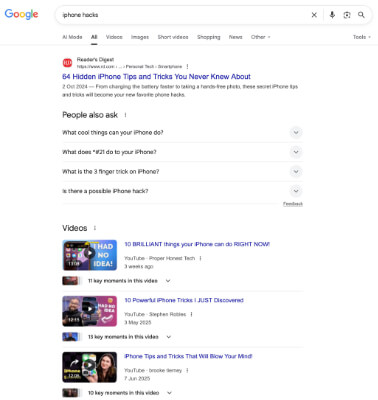

Instead, go with something like “X iPhone Tricks I Actually Use Every Day” or “The Hidden iPhone Features That Save Me Hours Each Week.”
Be sure to personalize the actual content inside the post as well. Clickbait is the worst way to grow a loyal following.
Note: I like to think about it like this; your headline is a promise and it’s your content’s job to deliver on that promise.
12. Use click-worthy featured images
When users scroll through feeds on their phones, their eyes are naturally drawn to images more than they are to text.
For this reason, I highly recommend creating eye-catching featured images to grab a user’s attention and convince them to click.
A simple way to do this is by including your headline in your featured image, or at least a condensed version of it.
You can also personalize your headlines by including yourself or your team in them. This is something MailerLite does with their featured images.


Each one includes a high-quality image of a MailerLite team member.
13. Include shareable images in your posts
One strategy for growing your audience is by having your audience grow it for you.
When you create content that’s entertaining, engaging, or highly valuable, your readers can’t help but share it.
Try including more shareable images in your posts.
They could be personal images of you doing what you’re describing in your article. It could be a simple image showcasing something from your article but with a secret easter egg hidden in the background (in plain sight).
Most of the time it’ll be a graphic that includes facts featured in your post. You can create images like these with a graphic design tool. Visme and Canva are great options.
Use a social sharing plugin to encourage readers to share your images on social media.
14. Offer sitewide lead magnets
A good portion of opt-in forms on the web have a simple “Subscribe for Updates” call to action (CTA).
Creators who use forms like these are banking on the idea that their readers will be so interested in their content, they’ll have to subscribe.
It is possible, but most readers need a little encouragement before they’re willing to opt in.
That’s something lead magnets can provide.
Lead magnets are free offers you provide to your readers in exchange for their email addresses.
Examples include ebooks, checklists, free courses, case studies, whitepapers, and even downloadable assets, such as icon sets.
Related: How to Create a Lead Magnet That Converts Like Crazy
Most email marketing services allow you to distribute lead magnets to subscribers once they confirm their subscriptions.
A “sitewide lead magnet” is a lead magnet that’s suitable for every visitor who comes to your website, not just a subgroup within your audience.
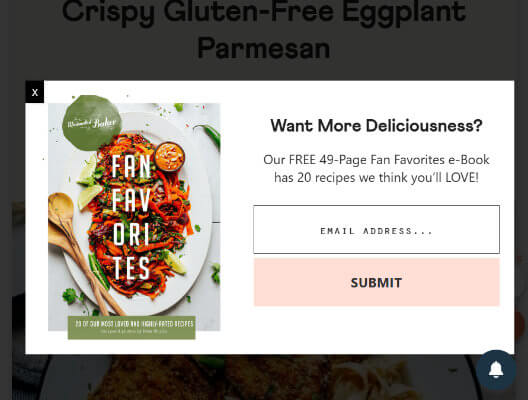

Offer it through your site’s primary opt-in forms, such as forms on your Home, About, Blog and Contact pages.
Consider creating dedicated landing pages for your lead magnets as well. Just as I suggested creating a landing page for your newsletter, a dedicated landing page for your lead magnet will help you promote it better to your audience.
15. Offer content upgrades on blog post pages
Sometimes your sitewide lead magnet won’t be enough.
It might be related to your niche, but your audience might be filled with a particular subgroup, a subgroup that has very specific needs.
In cases like these, it’s best to offer what’s known as a content upgrade.
A “content upgrade” is a lead magnet you offer on a blog post page that extends the value your blog post provides to your reader.
Typically, a content upgrade is designed to be promoted on a specific blog post page, but you can also create category-wide content upgrades.
Here’s an example of what you could do for a guitar blog:
- Content Upgrade for specific blog post: Care/user guide for a specific electric guitar model; offered on a review for that guitar
- Content Upgrade for a category: Buying guide for electric guitars; offered on all posts centered around electric guitars
16. Host social media contests
Running a social media contest is one of the best ways to grow your email list and your social media following at the same time.
It’s really easy to do with a tool like Uplup.
This tool allows you to add an entry form to a page on your website where participants can keep track of the entry requirements they’ve completed. You can create dedicated landing pages as well.


Available entry requirements include subscribing to your email list, following you on various social media platforms, liking specific social media posts, commenting on specific posts, and sharing specific posts.
Of course, there are other social media contest tools out there, but Uplup is one of the best I’ve tested so far.
Here are a few giveaway ideas you can use to grow your audience:
- Engage to win
- Hashtag challenge
- Sponsored giveaway
- Giveaway when you reach a specific milestone, such as 100,000 followers
17. Publish quizzes to your website
Quizzes are a fantastic way to get visitors to engage with your website.
Quiz types you can publish on your website include personality quizzes, graded quizzes, trivia quizzes, and guided quizzes.
Woorise is a great option for creating quizzes.


It has a WordPress plugin and doubles as a lead generation tool, so you can use it to grow your email list as well.
18. Collaborate with other creators in your niche
Collaboration is one of the most effective ways to grow a following and increase engagements overall.
When you and your collaborator partner up for content, you expose each other to your respective audiences.
Their followers who aren’t following you get exposed to your content, and vice versa.
You expand your reach without relying on the algorithm.
And if everything works out, you’ll always have an additional marketing channel when you have something to promote.
Collaboration is mostly done on social media, but you just as easily trade guest posts with other bloggers in your niche or even collaborate on a big project, such as a case study.
19. Duet with and request duets from other creators
Some social media platforms, such as TikTok and Instagram, have a feature you can use to create “duets” with other creators.
A duet is a side-by-side video that features your video on one side and another creator’s on the other.
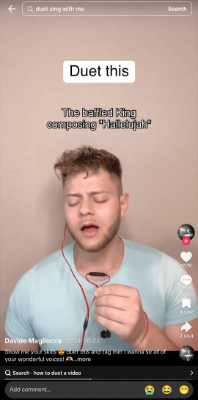

This type of video is most popular on TikTok, but you can create similar videos with Instagram’s Remix feature.
Duets are a useful way to collaborate with other creators without directly partnering with them.
You can create a duet with any video that has the feature enabled.
Similarly, you can turn duets on for your own videos, and ask other creators to duet you.
Duets are perfect for challenges, reactions, and “add-ons,” the latter being duets in which you add to a video.
You might add a guitar part to someone’s piano video or fill in spots of someone’s video that are missing (like if someone’s arm is out of frame and you create a duet that features your own arm in its place).
In a similar vein, you can use stitches to include part of someone else’s video in your own video.
This is another great content type to use if you want to react to someone’s content or take on a challenge.
Creators you duet and stitch may even repost your videos or duet and stitch your videos in response.
Related: Social Media Post Ideas to Keep Your Audience Engaged
20. Engage with other creators without expectation
It’s important to remember that other creators aren’t sponsors. You can’t expect them to hand out engagements on a transactional basis.
Don’t withhold likes, follows, and reposts from creators who don’t offer the same, and don’t launch follow for follow campaigns.
Genuine relationships are built on a foundation of trust, respect, and patience.
As you fire out content, engage with other creators in your niche without requesting them to do the same.
Leave comments on other creators’ posts, repost their content, follow them, and mention their content when you’re inspired by them.
If your own content is good and your audience is growing, these creators will support your content on their own without you having to ask.
Note: This is givers gain. The more generous you are with engagements, the more you will receive in return.
21. Promote lead magnets in guest posts
Having trouble getting clicks from Google organically? Try marketing your free offers on other blogs.
Find similar blogs in your niche, and pitch articles ideas that relate to your lead magnet.
When you request a link to be included with your submission, link to the landing page you created for your lead magnet.
This way, you have another source of traffic outside of Google and social media.
Note: Years ago, before I stopped accepting guest posts, Daniel Ndukwu used this approach and earned around $2K in course sales. All he did was include a link to his landing page in his author bio. Only high traffic blogs can deliver these kinds of results, however. Choosing blogs with large email lists will typically be your best bet.
Strategies for keeping an audience
Your work isn’t over as soon as a visitor to your website becomes a subscriber or a social media user becomes a follower.
They can just as easily unsubscribe from your list or unfollow your profile.
If you want to build a loyal following, you need to continue providing value to your audience in any way you can.
In fact, the work you do to keep your audience will likely be a lot more rewarding than the work you do to build it.
In this section, you’ll find strategies you can use to retain the audience you’ve built.
22. Solve your audience’s problems
A good way to create content that offers a lot of value to your audience is by creating content that solves your audience’s problems.
Your audience likely has a lot of pain points, things they’re struggling with in your niche and roadblocks they can’t overcome.
Your job is to uncover those pain points, determine ways to solve them, then share those solutions with your audience.
Ask them what they’re struggling with. Start conversations in your comment section. Read other creators’ comment sections. Research complaints your audience makes on forums.


How you solve your audience’s biggest pain points is entirely up to you.
You can turn solutions into blog posts, offer ebooks and courses, or even develop your own products.
The point I’m trying to make is that if you offer actionable solutions where others only offer tips that might help, you give your audience a really good reason to stick around.
23. Be consistent with your content strategy
When you get started with social media, you might be tempted to chase trends in hopes of going viral.
Going viral is a dream a lot of creators have, and for good reason, too.
When your video does well on social media, you receive more followers and engagements after receiving crickets for so long.
Unfortunately, while this is what you want, it’s not what your followers want. It’s not even what the algorithm wants.
What other users and the algorithm really want is consistency. In fact, consistency will always beat virality.
When users enjoy a video you’ve created, they’re going to want to view other videos just like it. But when they go to your profile and find no other videos like the one you went viral with, they’re less likely to follow.
I highly recommend paying more attention to the types of content you create and how you create that content. Along with content pillars, try to come up with content series that cover different topics in the same styles.
And above all, create a publishing schedule for your social media strategy.
Consider using a tool like SocialBee to manage it.
Each scheduling tool is different. With SocialBee specifically, you can create content categories and then set up a specific publishing schedule for each one.
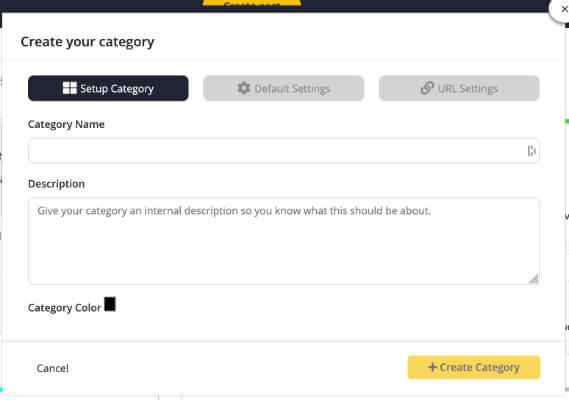

If you’ve got evergreen content, you can choose to recycle those posts indefinitely, end them after a number of shares, or a specific date.
Related: How Often to Post On Social Media (According to Data from Multiple Studies)
24. Follow-up on posts that go viral
Like I said, when one of your videos goes viral, your followers (new and old) are going to visit your profile in search of other content just like it.
What they’re also going to look for are updates.
When a post goes viral on one of your profiles, create follow-up content for it.
Provide updates if your original post was a current event. Provide more context if something about your original post was unclear.
Most importantly, answer viewer comments. Create a video to answer comments in bulk.
A lot of your followers will discover your content from posts like this. They won’t stick around for very long if you ignore it or don’t bother creating follow-up content for it.
25. Offer your content in multiple formats
As a blogger, you know that social media distribution is important for traffic, especially in an age when search traffic isn’t as reliable as it used to be.
But did you know that creating social media content can help you keep an audience? Vice versa with blogging if you’re a social media creator.
Some members of your audience prefer to read content while others prefer to be spoken to.
Some need thorough videos (long-form YouTube videos) while others need things to be as short and concise as possible (short-form videos).
This is something I’ve been trying to do more with Blogging Wizard’s YouTube channel and social media profiles.
Even at times when I’m promoting an article, I’ll repurpose the content into a helpful social media post and slap a link in the comments.
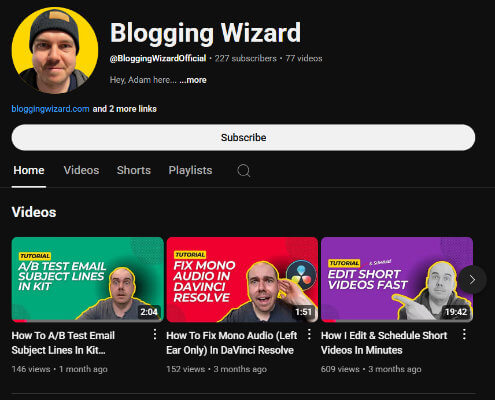

Try to repurpose more of your videos into social media posts and more of your social media posts into blog content.
The idea here is to avoid reinventing the wheel and get more mileage out of every piece of content you publish.
Note: It helps to decide on one central content type to repurpose from. I tend to flick between blog posts and videos.
26. Use Instagram stories to keep your audience in the loop
Some content isn’t good enough to publish to your main content channels.
For instance, if you’re traveling, your general audience might not be too interested in viewing footage of you boarding a plane.
On the other hand, your engaged audience loves this kind of content. Fortunately, there’s a perfect place to upload it: Instagram Stories (and Facebook Stories, of course).


Instagram stories are the perfect content format to use to keep your audience in the loop in real time. You can even use it to promote your latest posts.
You can even use Instagram story polls to engage with your audience with quizzes and advice.
27. Segment your email list
When you create an email list, all of your subscribers end up on the same list by default. This means every subscriber will receive every email you send.
If you do have a guitar blog, this means every beginner guitarist, advanced guitarist, and professional guitarist will be on the same list.
Every subscriber who plays the electric guitar will be lumped in with every subscriber who plays the acoustic guitar.
Sure, you might play both, but does your subscriber?
Email segmentation is a nifty little strategy you can use to organize your email list into different sublists.
This means the email list for your guitar blog can have the following lists:
- Main list with all of your subscribers
- Beginner guitarists
- Intermediate guitarists
- Advanced guitarists
- Professional guitarists
- Electric guitarists
- Acoustic guitarists
- Classical guitarists
So, when you publish a review of a new acoustic guitar model or gear for the electric guitar, you can promote these posts to their respective lists.
Even better, your subscribers will feel as though you’re catering to their specific needs and interests.
28. Use a custom “Thank You” page for your email list
When new subscribers join your list, you can send them down a path toward confirming their subscription (this is called a “double opt-in”).
The steps in this path are pretty simple:
- Subscriber enters their email address into your opt-in form and clicks Subscribe.
- Subscriber is redirected to a success page.
- Subscriber receives an automated email from you asking them to confirm their subscription.
- Subscriber is redirected to a confirmation page.
You don’t have to redirect subscribers to a dedicated success page (you can display a custom “success” message instead), but you should most definitely thank them on your confirmation page.
No matter what method you use to thank new subscribers for joining your list, make sure your page thanks them for subscribing and gives them a little teaser of what they can expect from your email list.


Consider sharing a photo of yourself on this page, one you can’t find anywhere else on your website or the world wide web.
29. Nurture new subscribers with a “Welcome Email Series”
New subscribers may never be as engaged with your brand as they are when they first join your email list, so you might as well make the most of it.
The first few emails you send to your subscriber should be part of a welcome email series that gets your subscriber familiar with your brand.
Have them segment themselves, distribute your most important pieces of content, promote your products, and encourage them to follow you on social media (if they haven’t already).
A welcome email series is a multi-email campaign sent over a few days to a week that says “this is what my brand is all about.”
30. Create balance with the “Rule of Thirds” strategy for social media
The idea behind this strategy is to ensure you dedicate an equal amount of time to each primary content type you create for social media.
The rule of thirds strategy deals with three content types: promotional, entertaining and valuable.
Here’s how it works:
⅓ of your content should be promotional, ⅓ should be entertaining, and the final ⅓ should be valuable.
Paying more attention to what kind of content you’re creating and how much of each content type you’re creating is a great way to ensure you’re not spending too much time on one content type or the other.
Creators who focus on creating entertaining content and content that provides value without asking for anything in return receive far more engagements than creators who do nothing but promote things.
You don’t necessarily need to break up your strategy into three content types or a ⅓ of each content type, but you should try to create a balance in your publishing schedule.
This is mainly to avoid publishing too much promotional content.
31. Host Q&A sessions
One of the best ways to retain an audience is by actively engaging with that audience.
Get your subscribers to engage with you by asking them to ask you questions, then answer those questions.
A popular way to do this is by hosting a Q&A session, also known as an “Ask Me Anything” or AMA, on social media.
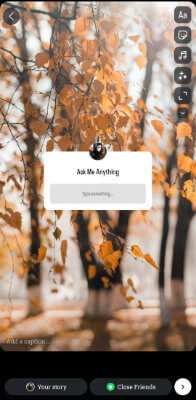

There are a few different ways you can do this on social media and your blog:
- Host an AMA livestream. Instagram and TikTok work great for this, but Facebook and YouTube work as well.
- Use the Questions sticker in an Instagram story, then respond to each question with an additional story.
- Ask your followers to ask you questions in a tiktok, then respond to each question comment with another tiktok.
- Put an “Ask [your name]” form on your website, then create a blog post series where you answer reader questions.
Related: Creative Instagram Story Ideas to Beat the Algorithm
32. Offer exclusive content through your email list
The majority of email marketing content (for blogs, at least) consists of a short blurb about a recent post the blog has published followed by a CTA that leads to that post.
This puts your subscribers on a similar level as non-subscribers.
Sure, your subscribers are the first to hear about your new post, but subscribers and non-subscribers alike have access to it.
You can do better.
To encourage your subscribers to stay subscribed to your list and engage with your brand more often, create exclusive content for your email list, and only offer it through your email list.
This could be a paid newsletter subscription in which you create premium content only paying subscribers have access to.
It can also be exclusive blog posts you only publish through your email list (but for free!).
No matter what content you decide to distribute to your subscribers, make sure it’s something they can only get by subscribing to your email list.
33. Create a space for your community
Your email list is great for staying in touch with your engaged audience in one location, but what if you want your audience to be able to engage with each other?
Patreon is a popular tool for community building and content funding, but it’s more of a video hosting platform than anything else.
Alternatively, use a platform like Skool to build a paid community instead, especially if your niche is something you can teach.
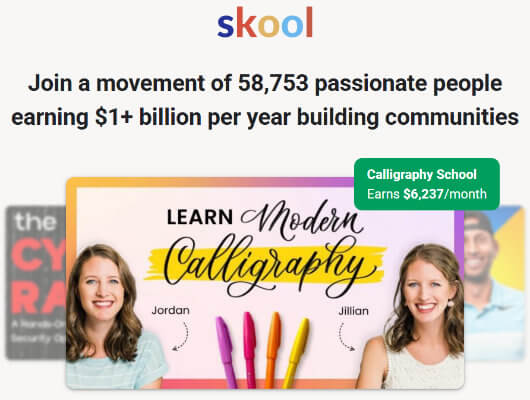

It has a course builder, a posting feature your audience can use to post status updates to the community, a calendar to keep your audience up to date with events, private chat, and more.
34. Create a Short-Form Video Series That Relies On Audience Engagement
Have you ever come across a TikTok that was a response to a comment, but when you click-through that comment, you realize the source video was also a response to a comment?
This is a unique content type some creators use where you create content your audience specifically asked for.
The “respond to a comment with a video” feature on TikTok makes this easy to do, but you can also make a post for requested content and start it off with “some of you have been asking” to let your audience know.
A real-world example of a video series that relies on audience engagement is Jake’s Macro Nature’s “Can You Guess What This Macro Photo is?” series on TikTok.


Everyone is asked to leave their guess in the comments, which boosts Jake’s engagement.
He doesn’t reveal the answer until the next video, so his audience has to keep coming back to see if they were right.
35. Share user-generated content
When you grow a loyal following, your followers are going to create content for or about your brand. This is called user-generated content.
Share it when they do. Put it in an Instagram story, comment on it, and repost it to your own page.
If your follower’s video got a lot of traction, consider creating a response video to it, such as a stitch or duet.
36. Start a photo sharing trend among your audience
TikTok and Instagram have this feature you can use to request your audience to create their own version of a post you create.
Use it to challenge your audience or let them show off something of theirs. Just make sure it’s related to your niche.
This strategy allows you to grow your audience and engage with it at the same time.
Related: How to Use Interactive Social Media Posts to Grow Your Audience
37. Share current events with your audience
A lot of marketers recommend creating content for trends to boost engagement short term, but did you know you can actually turn this into a series?
Whether it’s a video series you create for TikTok or a series you publish to your email list, consider keeping your audience in the loop with your niche by sharing current events with them.
You can create a round-up of the latest trends in your niche or create one video per trend.
Just know that if a large portion of your audience finds you through this type of content, they’re going to expect it on a regular basis.
38. Respond to audience concerns when they arise
One of the most important things you can do to keep up engagement is responding to controversy head on.
If you ignore it and try to publish content like usual, your comment section will be flooded with comments about the controversy.
If you turn your comment section off, not only do you lose a huge source of engagement, you also add to the controversy by trying to hide from it.
Address any concerns your audience has directly, especially if you land yourself in hot water.
You’ll lose followers regardless, but the ones who stay will respect you more.
Why trust & loyalty beat virality on the web
Long-term traffic has never been harder to achieve. 🫠
Even on social media, the short-form video format has made it easier for anyone with a smartphone to upload content, creating more traffic than ever.
I want to give you a little hope if you’re feeling let down by some of the metrics you’re seeing.
Viral content does increase followers and engagement, but this is only short term.
There’s no guarantee that the viral video you’re receiving engagement for today is going to bring you engagement a month from now.
Taking the time to build a loyal following that trusts you and wants to view every post you create is a much better strategy to follow.
Every video you create will receive engagement. You won’t have to chase trends or burn yourself out creating post after post.
The main lesson I want you to learn from this article is this: nurturing your audience is just as important as building it.
Always look for new growth opportunities, but don’t abandon the audience you’ve built in the process.
Trust and loyalty are the key to ensuring that we can keep doing this content creator thing.
Disclosure: Our content is reader-supported. If you click on certain links we may make a commission.

